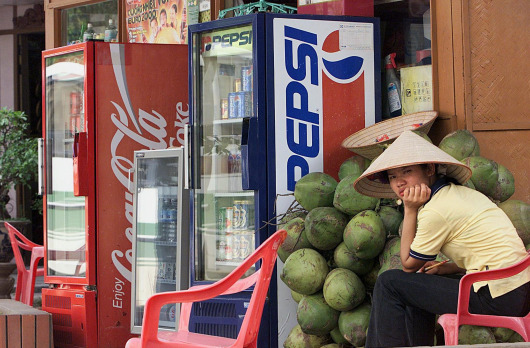International Marketing Adaptation vs. Standardization

The world-wide-web, technology, loose international trade policies & growing global competition are the driving factors for companies to explore international markets & expand globally. Sometimes companies do it out of simple need to survive, but more often they just want to grow larger. And why shouldn’t they, if there is a global demand for their product? International marketing is the same as local marketing, but coordinates its activities over several markets dealing with new environments & barriers that come from legal, cultural & societal differences in different markets/countries. There are 2 fundamental approaches to international marketing: adaptation & standardization.
Adaptation approach deals with country specific markets where efforts are adjusted to the differences in the marketing environment. Here is why a company should adapt:
- to consider culture – adjust to the differences in markets & countries
- to strengthen competitive position
- to use different media sources depending on what’s available in the new country
- to abide to local product regulations & advertising laws
- to compete successfully by not appearing/sounding foreign
- to consider differences in product appreciation
Standardization approach emphasizes the similarities between markets trying to take advantage of similar consumer aspiration regardless of its origin and similar marketing infrastructure when implementing strategies. It offers the following advantages:
- savings from economies of scale, mostly through reduced media production costs
- strong global brand image – consumers recognize it easily when traveling
- increased efficiency – lower costs of advertisement preparation
- reduced message confusion
- global oversight but centralized communication
- one global advertising strategy
Only a few products allow a totally standardized or a totally adapted marketing strategy because, most of the time both approaches have to be used to a certain degree. The factors that influence the degree of standardization and adaptation are the following:
- language differences (translation of the message, trade names, brands, etc…)
- cultural differences (what do people prefer or dislike, religion, attitudes, etc…)
- social differences (how do people interpret statements? )
- economic differences (literacy rate, media availability, etc…)
- legal & regulatory differences (local restrictions & industry norms)
- competitive differences: (what’s the right amount to spend, how intense is the competition, etc…)
It’s important that marketing/advertising messages fit the beliefs and tradition of the citizens in each country. While standardization is cost effective & makes most sense financially, to strengthen the product’s competitive position in new markets & countries that differ in culture, language, government regulations, topography, distribution & retail structure, adaption of some of these elements – most commonly language & culture – should always be considered.
© 2014 Branded Translations.
Branded Translations is a specialized language services agency. We help organizations reach multicultural and international audiences through quality translation and transcreation of marketing and advertising communications. For more information, visit BrandedTranslations.com.

